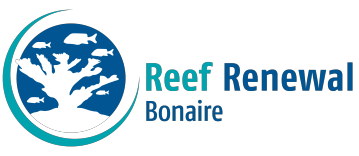A critical part of larval propagation and a benchmark of coral health is coral spawning. Spawning is the synchronized release of eggs and sperm or larvae into the water column. It takes a lot of energy for corals to engage in spawning, so corals only spawn when they are mature and healthy. In the last few years, multiple outplanted coral thickets have been spawning in the wild thus confirming that our restoration efforts are successful.
Depending upon the coral species involved, spawning events can happen only once or few times a year. Although the exact spawning triggers are still unclear, scientists have noted that changes in water temperature, moon phases, and timing of sunset all seem to play a role in determining when different species may spawn.
Every year Carmabi publishes their predictions for the coral spawning season. We use this valuable information to precisely plan our larval propagation work, particularly the estimated spawning windows for each of our target species.
Broadcast Spawning vs Brooding
Broadcast spawning is probably the most commonly depicted type of coral reproduction. Corals engaging in broadcast spawning release simultaneously sperm and eggs directly into the water column. This allows for easy collection at large volumes for larval propagation. On the other hand, brooding corals internally fertilize their eggs and release relatively few, developed larvae that settle right after their release. Naturally these corals produce larvae multiple times of the year, but in smaller volumes, limiting the amount that can be collected for propagation. As such, these corals are less likely targets for large scale restoration.
Spawning Monitoring
Although there are prediction charts each year for coral spawning all over the world, these charts remain predictions. Therefore, RRFB conducts coral spawning monitoring dives for several coral species throughout the year. The collected data allows RRFB to better understand the spawning patterns of Bonaire’s corals and to improve the efficiency of the collection stage for larval propagation.
Photo by Lorenzo Mittiga

